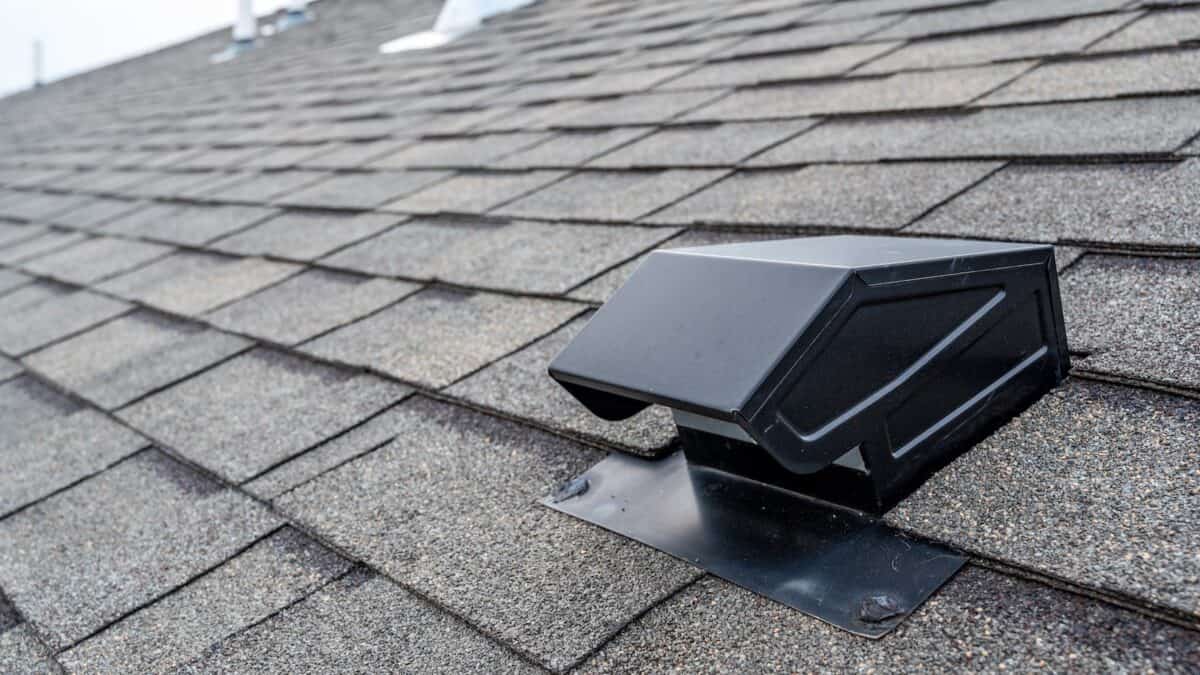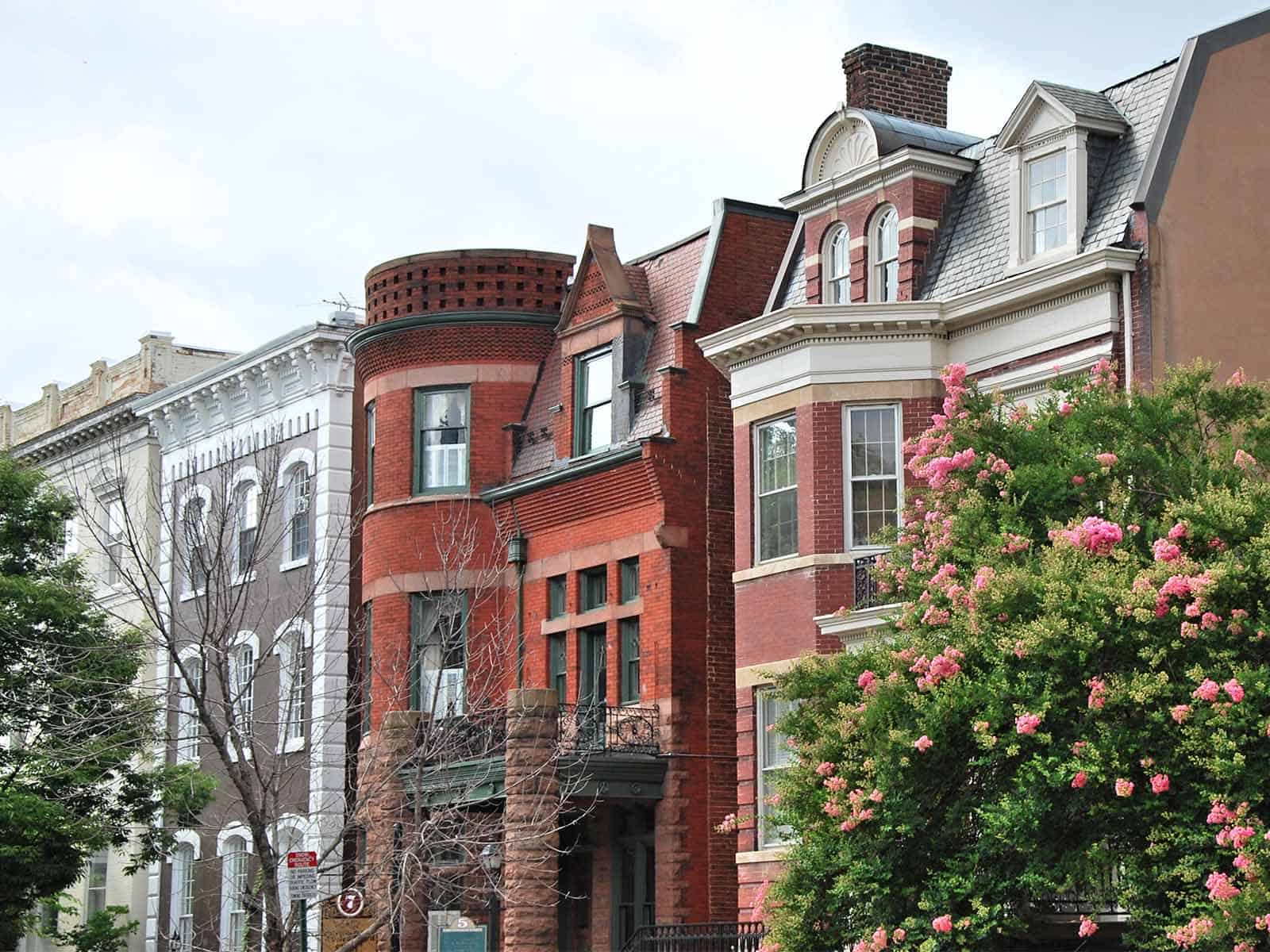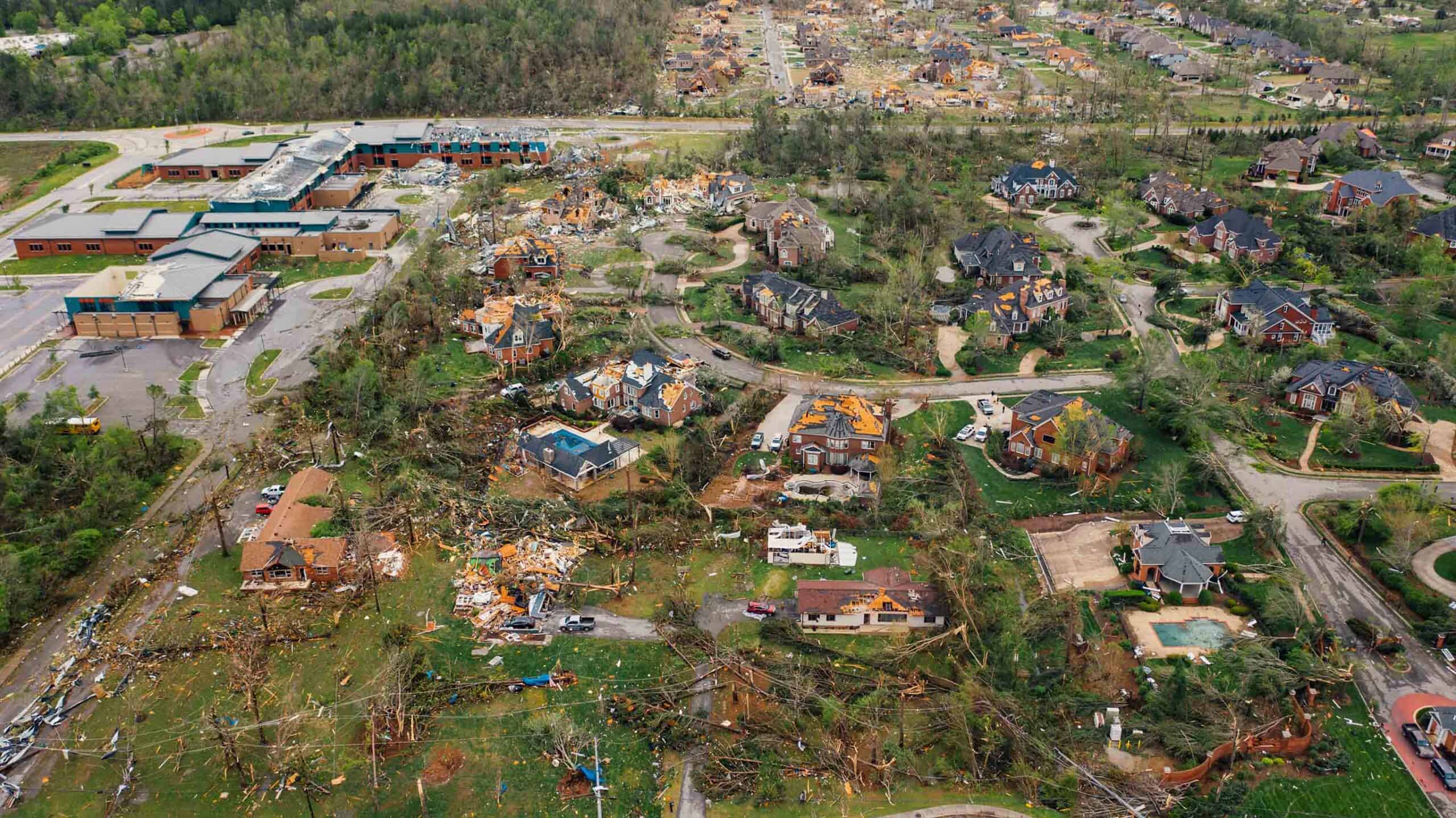Proper ventilation for a roof is important for several reasons. It helps to regulate the temperature of the attic space, which can have a significant impact on the overall energy efficiency of the home. In the summer, proper ventilation helps to prevent the buildup of heat and moisture, which can damage the roof and lead to the growth of mold and mildew. In the winter, ventilation helps to prevent the buildup of condensation, which can lead to damage from rot and mold.
Jump Ahead
- What is roof ventilation?
- How does roof ventilation work?
- Types of roof ventilation
- Benefits of proper roof ventilation
- Signs of poor roof ventilation
- Common roof ventilation problems
- DIY vs. professional roof ventilation
- Misconceptions about roof ventilation
- Roof ventilation maintenance
What is Roof Ventilation?
Roof ventilation is a system that allows air to flow through the attic and roof space of a building. The purpose of roof ventilation is to regulate the temperature and moisture levels in the attic, which can impact the overall health of the roof and the building. In order to properly function, a roof ventilation system should allow for air to enter at the eaves or soffits and exit through vents located at or near the peak of the roof. This creates a flow of air that helps to remove heat and moisture from the attic, which can help prevent damage to the roof and structure of the building.
How Does Roof Ventilation Work?
Roof ventilation works by allowing air to circulate through the attic space or roof cavity, preventing heat and moisture buildup. This can be achieved through various types of vents placed at strategic locations on the roof, such as soffit vents, ridge vents, gable vents, or turbine vents.
Soffit vents are located at the underside of the roof overhang and allow cool air to enter the attic space. This cool air rises and exits through a vent located at the highest point of the roof, such as a ridge vent or a turbine vent. This creates a natural airflow that helps to regulate temperature and moisture levels in the attic.
Gable vents are placed at the ends of the attic and work similarly to soffit vents and ridge vents by allowing air to flow in and out of the attic. Turbine vents are designed to use wind power to draw hot air and moisture out of the attic. As the wind blows, the spinning turbine creates suction that pulls air out of the attic.
Types of Roof Ventilation
There are several types of roof ventilation systems that can be installed on residential and commercial building roofs. These include:
- Ridge Vent: This type of ventilation system is installed at the peak of a roof, running the entire length of the ridge. It allows hot air to escape from the attic while drawing in cool air through the soffit vents.
- Soffit Vent: Soffit vents are installed on the underside of the eaves, allowing fresh air to enter the attic space. They work in conjunction with ridge vents to create a continuous flow of air.
- Gable Vent: Gable vents are installed on the exterior walls of a building near the peak of the roof. They work by allowing hot air to escape from the attic space through the vents.
- Roof Turbine Vent: Also known as a whirlybird, this type of ventilation system uses wind power to draw hot air out of the attic. As the turbine spins, it creates a vacuum effect that pulls air out of the attic space.
- Power Vent: Power vents are electrically powered and are designed to expel hot air from the attic space. They are typically installed on the roof or gable ends of a building.
- Static Vent: Static vents are non-moving vents that are typically installed near the roof peak. They are designed to allow hot air to escape from the attic space through natural convection.
Each type of ventilation system has its own unique advantages and disadvantages. The best type of ventilation system for your roof will depend on factors such as the size and shape of your roof, the climate in your area, and your budget.
Benefits of Proper Roof Ventilation
Proper roof ventilation offers several benefits to homeowners, making it an essential part of any roofing system.
- Extension of the life of the roof: A well-ventilated roof will have a lower temperature in the attic, reducing the amount of heat and moisture that builds up in the roof, which can lead to damage and deterioration over time.
- Reduction in energy costs: A well-ventilated roof allows hot air to escape during the summer, reducing the amount of heat that enters the home and therefore reducing the need for air conditioning. In the winter, proper ventilation can also prevent moisture from building up in the attic, which can reduce the risk of ice dams forming on the roof.
- Improves indoor air quality: Without proper ventilation, the buildup of moisture in the attic can create an environment that is conducive to the growth of mold and mildew. These harmful organisms can spread throughout the home and cause respiratory issues for occupants. By ensuring proper ventilation, homeowners can prevent the buildup of moisture and improve the overall air quality of their home.
- Prevent damage to shingles and other roofing materials: Excessive heat and moisture buildup can cause shingles to warp, crack, or buckle, reducing their effectiveness in protecting the home from the elements. By ensuring proper ventilation, homeowners can help protect their roofing materials and extend their lifespan.
Signs of Poor Roof Ventilation
- One of the most noticeable signs of poor roof ventilation is higher energy bills. Without proper ventilation, hot air becomes trapped in the attic, causing your air conditioning to work harder and less efficiently.
- Formation of ice dams on your roof during the winter. When heat from your home rises into the attic, it melts the snow on your roof, which then refreezes when it reaches the cooler edges. This can cause ice dams to form, which can lead to water damage and leaks.
- Mold and mildew growth can also be a sign of poor roof ventilation. Moisture that becomes trapped in the attic can create an ideal environment for mold and mildew to grow. Not only can this damage your roof and insulation, but it can also be a health hazard for you and your family.
- Roof deterioration. The trapped heat and moisture can cause your roofing materials to deteriorate more quickly, leading to premature wear and tear. This can ultimately lead to the need for expensive repairs or even a full roof replacement.
Proper roof ventilation is critical to the longevity and efficiency of your roof. If you suspect your roof is not properly ventilated or you are experiencing signs of poor ventilation, it’s important to contact a professional roofing contractor to assess your situation and determine the best ventilation solution for your home.
Common Roof Ventilation Problems
There are a few common roof ventilation problems that homeowners may encounter.
- Presence of obstructions that prevent proper airflow, such as debris or insulation blocking vents.
- Use of inadequate or poorly installed ventilation systems, which can lead to inefficient airflow or even worsen ventilation issues.
- Moisture buildup and condensation can lead to mold and mildew growth, as well as damage to the roof structure over time.
- Lack of ventilation altogether can also cause problems, such as increased energy bills, ice dams, and premature roof deterioration.
It’s important to address any roof ventilation problems as soon as possible to prevent further damage to your home’s structure and to ensure proper ventilation for your roof.
DIY vs. Professional Roof Ventilation
When it comes to proper roof ventilation, homeowners may wonder whether they should tackle the job themselves or hire a professional. While there are benefits to both approaches, it’s important to weigh the advantages and risks before making a decision.
Hiring a professional to install or repair roof ventilation systems can provide several benefits. Professionals have the knowledge and experience to accurately assess the ventilation needs of your home and determine the best course of action. They can also ensure that the work is done correctly and up to code, reducing the risk of future issues. Professionals are insured and licensed, which means that if anything goes wrong during the installation or repair process, they are responsible for the damages, not the homeowner.
Attempting to install or repair roof ventilation systems as a DIY project can come with risks. Improper installation can lead to further damage to the roof or ventilation system, which can be costly to repair. Working on a roof can be dangerous, especially for those who are not trained in proper safety procedures.
It’s important to consider your level of experience and comfort with DIY projects, as well as the complexity of the ventilation system and the potential risks involved, before deciding whether to tackle the job yourself or hire a professional.
Misconceptions About Roof Ventilation
There are several misconceptions about roof ventilation that homeowners should be aware of. One of the most common misconceptions is that more ventilation is always better. In reality, the amount of ventilation needed for a roof depends on factors such as the size and shape of the roof, the type of roofing materials, and the climate in which the home is located. Over-ventilating a roof can actually lead to problems such as drafts, heat loss, and moisture buildup.
Another misconception is that roof ventilation is only necessary in warm climates. In fact, proper ventilation is important in all climates to prevent issues such as moisture buildup, ice dams, and roof damage from excessive heat or cold.
Some homeowners may also believe that ventilation is not important for flat roofs, but this is not true. Flat roofs still require proper ventilation to prevent moisture buildup and other issues.
Some homeowners may think that roof ventilation is a one-time installation that doesn’t require any maintenance. In reality, regular maintenance and cleaning are necessary to ensure that the ventilation system is functioning properly and to prevent issues such as clogs and debris buildup.
Roof Ventilation Maintenance
Maintaining proper roof ventilation is essential to ensure that your roof lasts for a long time and that your home is protected from potential issues caused by poor ventilation. Here are some tips for maintaining proper roof ventilation:
- Keep gutters and downspouts clean: Clogged gutters and downspouts can cause water to back up into your roof, leading to moisture damage and poor ventilation.
- Check your attic insulation: Your attic insulation should not block the vents in your roof. Make sure that your insulation is installed correctly and does not cover the vents.
- Clean your roof: Debris and leaves can accumulate on your roof and in your gutters, blocking ventilation and leading to poor air flow. Clean your roof regularly to prevent debris buildup.
- Hire a professional for inspections: Regular inspections by a professional roofing contractor can help identify any ventilation problems and provide recommendations for maintenance or roof repairs.
- Repair any damages: If you notice any signs of poor ventilation, such as mold growth or higher energy bills, address them immediately. This may involve repairing or replacing damaged vents or insulation.
By taking these steps to maintain proper roof ventilation, you can ensure that your roof is protected from potential damage and that your home is comfortable and energy-efficient.
Proper ventilation for a roof is essential for maintaining the health and longevity of the roof, as well as the overall energy efficiency and indoor air quality of the home. It is important to have a professional roofing contractor install and maintain proper ventilation to ensure that it is done correctly and meets all relevant building codes and manufacturer requirements.




